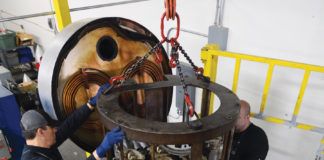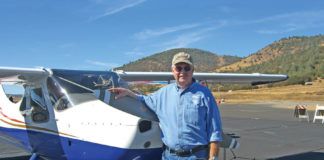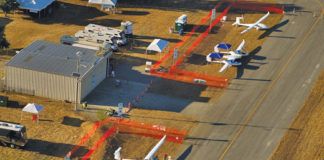
Gear Head
In the excellent Wittman W10 Tailwind article in the January 2011 issue, Marc Cook states that the Wittman gear landing-gear (which he defines as a tapered steel rod) replaced the flat spring-steel and Cub-style landing gear designs popular in the infancy of homebuilding. While he is correct about the rod gear being Wittmans, Marc might be surprised to find that the flat spring-steel gear he mentions is also a Wittman gear-the patent being granted him for that design variation in 1937. Cessna used the flat spring gear on most of its earlier fixed-gear singles and paid Wittman royalties for 17 years.
Scott Spencer
To which we say, is there anything old Steve Wittman couldn’t do?-Ed.
Concentric Circles
Excellent article on Tailwind. I am building a modified Dean Wilson design, using the double-tubes for flaps and ailerons, like the W10. Nothing is really new: The Germans used them in WW-II. I really would like to know what kind of bearings or bushings are used in the tubes on the W10. Any help would be appreciated.
Ed Ashby
Jim Rust responds: Nothing fancy. Just a simple aluminum bushing whose outer diameter is the same as the flap torque tubes inner diameter, and the ID is about the same as the aileron torque tubes OD. Its just pressed into place. Further on the Tailwind, we received an email from Aircraft Spruce & Specialtys Jim Irwin soon after the story ran, saying that Spruce will either carry or recommend builders secure a copy of Jim Stantons Building the Wittman Tailwind manual. He agreed that the plans are old, and he wants to see more of these great airplanes completed.-Ed.
Booogus!
In Decembers The Cost to Build author Marc Cooks comment Boooogus! in reference to Completed Cost fields in the annual Buyer’s Guides: Having subscribed to your magazine and read these guides for a number of years, I think both the Beginner Build Time and No. Completed and Flown fields are equally Bogi in many instances. Nice of the manufacturers to round off to the nearest 100 or so for these fields, but couldn’t they be just a little more realistic in the future? Especially completions, which should be a fairly identifiable number.
John Horahan
We agree 100%. The estimated build time is probably the most goosed number you’re going to find because its so easy to create plausible deniability. Who is building the airplane? What tools are at hand? How efficient is that builder? The variables stack up quickly. Some time ago we began asking for beginner figures to exclude the low end of the range. We used to hear, Oh, it takes between 500 and 2000 hours, so average that and call it 1000 hours. Well, the guys building in 500 hours were pros. Also, its our recommendation that builders look at the methods of construction and talk to other builders first to get a handle on how accurate the factorys number is. Then double it. The trouble with completions numbers, which should be easy to verify, is the way the FAA identifies homebuilts. Run a computer search for an RV-6. You might get returns for RV6, RV-6, RV6A or Bobs Dream 3000. And even then, thats just the registration, which doesn’t mean its flying, and we know that airplanes are retired every day. Simply put, there’s no solid, second source for this data, so we rely on what the manufacturers tell us. Some are pretty truthful, and some, were fairly sure, are making it up as they go along. If there were a better source for this data, wed use it.-Ed.
Mag Lights
I enjoyed the article on magneto timing in the January issue, but found the comment about the indicator light turning off when the points open to be in error; the light will turn on at the instant that the points open. To test this, ground the lead that goes to the mag to the grounding wire clip, and the light goes out. A look at your own tester to check this out would be a good plan.
Dan McKeith
Good catch. You are correct.-Ed.
Uh-oh, There Goes the Ego
I just wanted you to know that Dick Starks has become my favorite author in your magazine. But don’t tell him. I am sure he would quickly become insufferable.
Dave Lind
Pen and Ink
I love Robruchas cartoons each month even though I wont begin to pronounce his name. I guess its because I live in Louisiana and we have such a weird culture, language and lifestyle-were all swamp people you know. I just have to write to set the matter straight. Rectangular areas of water in agricultural areas are rice fields, not rice paddles; even in Japan and China the term is paddies. A paddle is something your cartoon characters should have onboard their amphibious aircraft. The picture in the cartoon (January 2011, p. 76) surely looks like the shoreline of one of our many lakes and bays, which are excellent places to land and operate out of.
Ron Lawson
We’ll have to let Robrucha off the hook on this one. This was a typographical mistake in replicating the caption. He surely knows the difference.-Ed.
Write to [email protected] or mail a piece of your mind to:
KITPLANES, 203 Argonne Ave., Suite B105, Long Beach, CA 90803.




